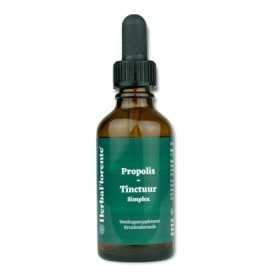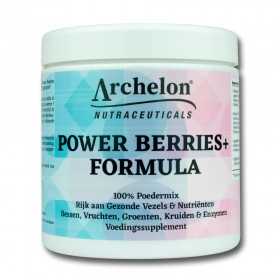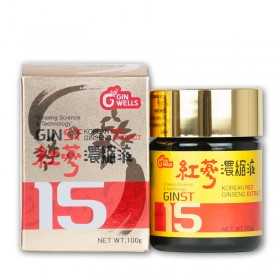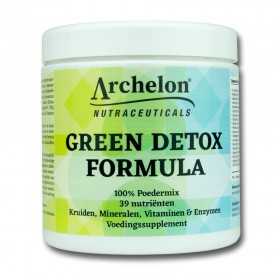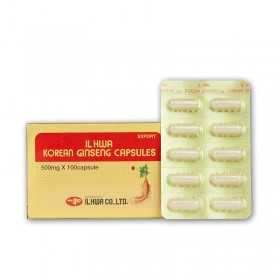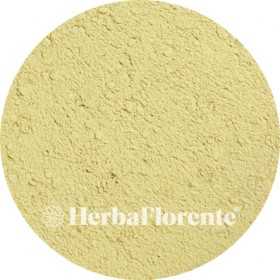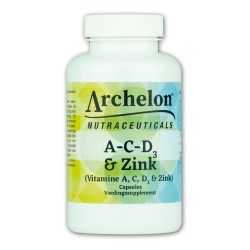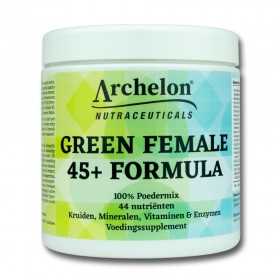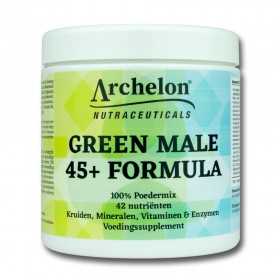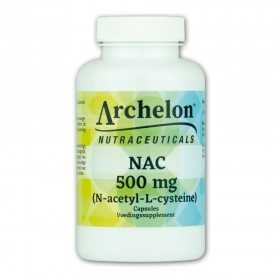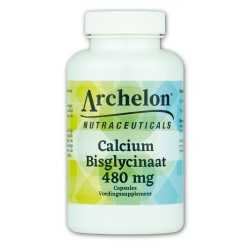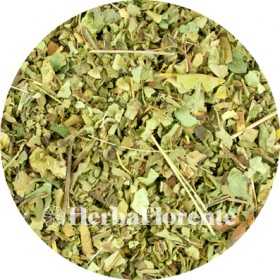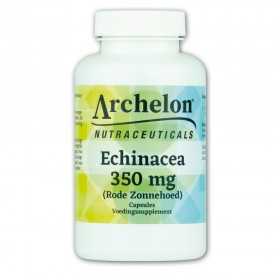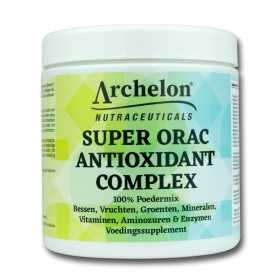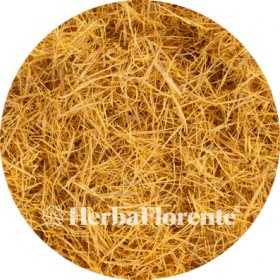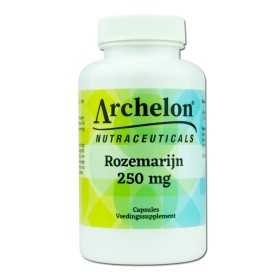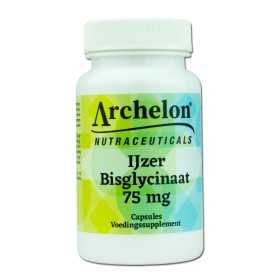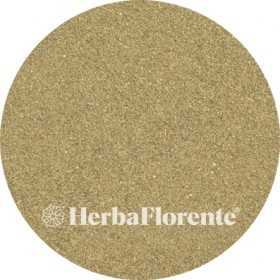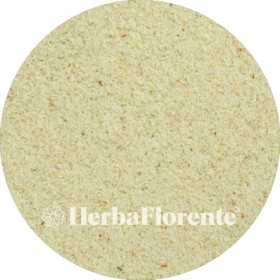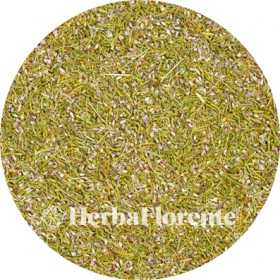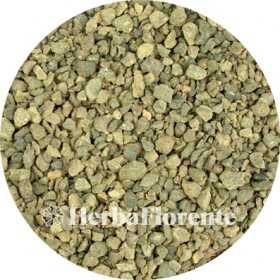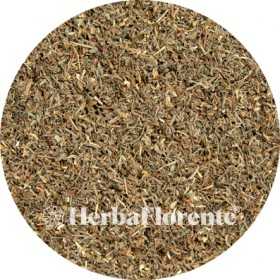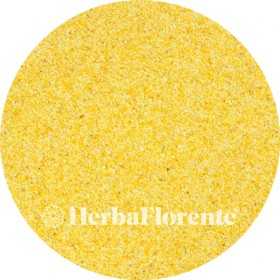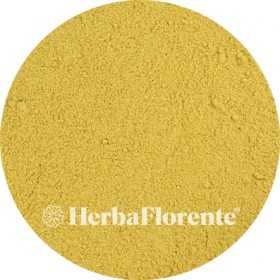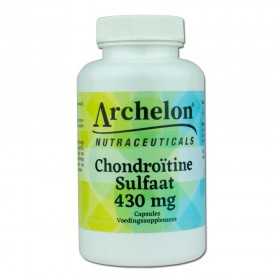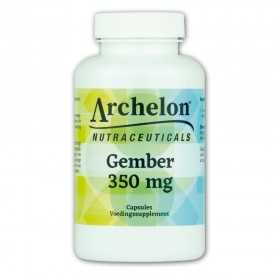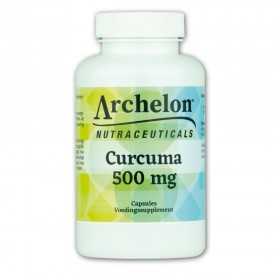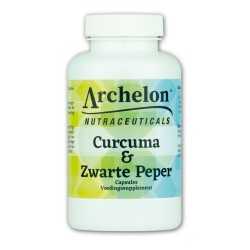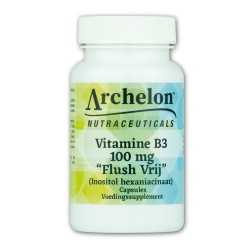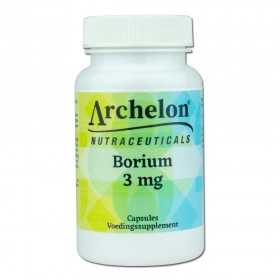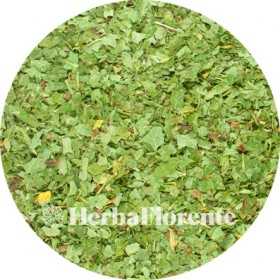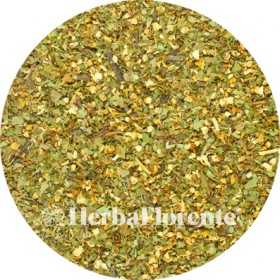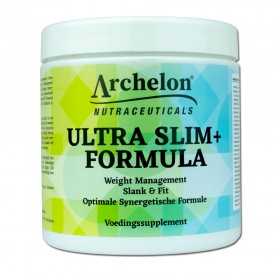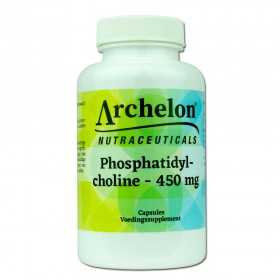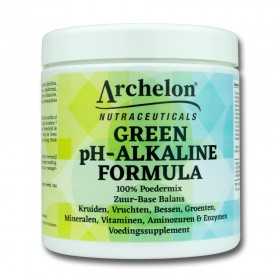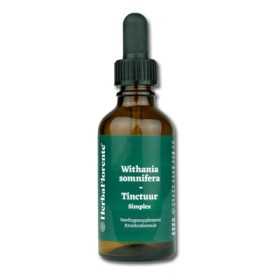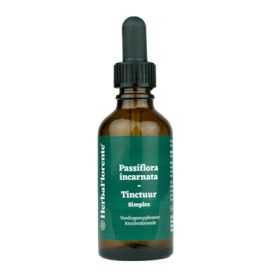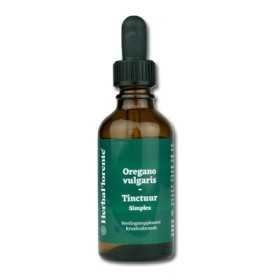Best sellers
There are 366 products.
Rosemary - 250 mg
Rosemary (Rosmarinus officinalis L.) is a fragrant, compact shrub belonging to the Lamiaceae family. This versatile herb has been used for centuries for various purposes, both culinary and for health promotion. Originally from Mediterranean regions, the Rosmarinus officinalis displays lush blooms in spring with small, lavender blue flowers.
The name "rosemary" has its origins in the Latin "ros" (roris), meaning "dew", and "marinus", meaning "sea": "dew of the sea". Since ancient times, by both the ancient Greeks and Romans, Rosmarinus officinalis has been valued for its health-supporting properties. It helps with digestion, strengthens the immune system and contains antioxidants.
The name "rosemary" has its origins in the Latin "ros" (roris), meaning "dew", and "marinus", meaning "sea": "dew of the sea". Since ancient times, by both the ancient Greeks and Romans, Rosmarinus officinalis has been valued for its health-supporting properties. It helps with digestion, strengthens the immune system and contains antioxidants.
€19.95
Iron Bisglycinate - 75mg
Iron in the form of iron bisglycinate has good bioavailability. It is a chelated form of iron bound to two (bis) molecules of the amino acid glycine which has more benefits for the body. Iron is an important element that plays a role in, among other things, the production of hemoglobin in the red blood cells. As a result, iron plays a role in oxygen transport in the body. Iron is also important for energy-yielding metabolism.
€16.95
Black Pepper - Piper nigrum
Pepper is a commonly used spice in cooking, known for its sharp taste. It is obtained from the berries of the tropical pepper plant, Piper nigrum. The pungency of black peppercorns comes from the component piperine. Pepper comes in different colors, including black, white and green.
It can be used in virtually any dish and enhances the flavor of meat while adding a spicy note to soups and purees. Sometimes pepper is also used in baking products, such as gingerbread, albeit in moderate amounts. Whole peppercorns, dried berries of the pepper plant, are used in some dishes. Although pepper is also available ground, many gourmets prefer freshly ground pepper. In addition, pepper is also often used fresh. In India, pepper is added to the spiciest curry mixtures.
It can be used in virtually any dish and enhances the flavor of meat while adding a spicy note to soups and purees. Sometimes pepper is also used in baking products, such as gingerbread, albeit in moderate amounts. Whole peppercorns, dried berries of the pepper plant, are used in some dishes. Although pepper is also available ground, many gourmets prefer freshly ground pepper. In addition, pepper is also often used fresh. In India, pepper is added to the spiciest curry mixtures.
€3.00
From: €3.00
Psyllium husks (Premium Psyllium Fiber) - Psylli flavum Testa
Psyllium husks, derived from Plantago psyllium, are a blend of partially soluble and fermentable fibers that are much appreciated by people looking to promote their gut health. They are a valuable addition to your daily fiber intake, but it is crucial to drink enough water throughout the day for optimal results.
With more than 80% fiber, psyllium seed consists mainly of 70% soluble and 30% insoluble fiber. Once psyllium comes into contact with water, it forms a gel that can absorb up to ten times its own weight in water. This increases the amount of fluid in the intestines, making stools softer, but don't forget to drink enough water!
With more than 80% fiber, psyllium seed consists mainly of 70% soluble and 30% insoluble fiber. Once psyllium comes into contact with water, it forms a gel that can absorb up to ten times its own weight in water. This increases the amount of fluid in the intestines, making stools softer, but don't forget to drink enough water!
€2.80
From: €2.80
Shrub Heather - Erica vulgaris
The Heather (Erica vulgaris - Calluna vulgaris) belongs to the heath family (Ericaceae) and grows throughout Europe, especially in Central and Northern Europe. It even reaches Western Siberia in the east. In the nineteenth century, Scottish immigrants brought the heather to Canada, from where it spread throughout North America. It is the only species in the genus Calluna, meaning it is a monotypic genus.
The shrub heath can grow to a height of 10-100 cm, sometimes even up to 150 cm in certain places. It has hermaphroditic, symmetrical flowers, with the calyx and petals being the same color. Purple flowers appear towards the end of the branches, creating the purple heaths from late July to early September.
The shrub heath can grow to a height of 10-100 cm, sometimes even up to 150 cm in certain places. It has hermaphroditic, symmetrical flowers, with the calyx and petals being the same color. Purple flowers appear towards the end of the branches, creating the purple heaths from late July to early September.
€2.20
From: €2.20
Propolis - Propolis
Propolis, the secret weapon of the bee colony, is used to protect the hive or hive against bacteria and fungi and as 'cement' to close the openings. It is a natural brown-red substance consisting of vegetable resins, beeswax, essential oils and pollen, with traces of vitamins and minerals.
From June onwards, honey bees collect resin from the buds and leaves of trees and herbaceous plants on warm days. They mix this with their saliva and process it with their paws, ultimately creating propolis.
From June onwards, honey bees collect resin from the buds and leaves of trees and herbaceous plants on warm days. They mix this with their saliva and process it with their paws, ultimately creating propolis.
€44.00
From: €44.00
Long Leaved Sundew - Droserae longifolia
The long sundew (Drosera longifolia) is a perennial carnivorous plant belonging to the sundew family (Droseraceae).
The plant grows to a height of 5-20 cm and forms a rosette of leaves. The leaves have long stems and are upright, oblong to lanceolate, with the widest point above the center. They are covered with numerous red, sticky tentacles containing glandular tissue. These tentacles catch small insects such as Simuliidae. Once an insect touches the tentacles, the leaf coils around the insect and secretes digestive enzymes. The released nutrients, including nitrogen, are absorbed by the plant.
The plant grows to a height of 5-20 cm and forms a rosette of leaves. The leaves have long stems and are upright, oblong to lanceolate, with the widest point above the center. They are covered with numerous red, sticky tentacles containing glandular tissue. These tentacles catch small insects such as Simuliidae. Once an insect touches the tentacles, the leaf coils around the insect and secretes digestive enzymes. The released nutrients, including nitrogen, are absorbed by the plant.
€5.40
From: €5.40
Garlic (Fine) - Allium sativi
Garlic (Allium sativum) has a beneficial effect on the circulatory system and the liver, while also supporting the immune system and regulating blood sugar levels.
Garlic belongs to the garlic family and produces a leafy, round flower shaft from the bulb in the spring. It is one of the oldest plants in herbalism. Although it is prized for its taste, garlic is also known for its strong smell.
Garlic belongs to the garlic family and produces a leafy, round flower shaft from the bulb in the spring. It is one of the oldest plants in herbalism. Although it is prized for its taste, garlic is also known for its strong smell.
€2.00
From: €2.00
Chamomile - Matricaria recutita, Chamomillae europ.
True chamomile, also known as Matricaria chamomilla or Matricaria recutita, is native throughout Europe and widely cultivated in countries such as Hungary and Eastern Europe. The ancient Egyptians revered chamomile as the flower of the sun god Ra. The herb is known for its supportive effect on the immune system, soothing effect on the respiratory tract and promoting digestion. Additionally, chamomile is often used as a natural sedative and to promote restful sleep.
€3.00
From: €3.00
Juniper Berries - Juniper communis
The juniper berry (Juniperus communis) is rich in vitamin C and antioxidants, which occur naturally in its berries. These antioxidants protect our body cells against harmful influences such as pollution and sunlight. In addition, they support digestion and contribute to healthy kidney function and fluid balance.
The juniper is a conifer native to Europe, Asia and America. This tree bears flowers and berries at the same time, which can be green and black. The name Juniperus is derived from the Celtic word 'juneprus', meaning rough, prickly or bitter, and 'communis' meaning plain. Since ancient times, the berries have been used by Greeks and Romans for their health benefits.
The juniper is a conifer native to Europe, Asia and America. This tree bears flowers and berries at the same time, which can be green and black. The name Juniperus is derived from the Celtic word 'juneprus', meaning rough, prickly or bitter, and 'communis' meaning plain. Since ancient times, the berries have been used by Greeks and Romans for their health benefits.
€2.60
From: €2.60
Chondroitin Sulfate - 430 mg
Chondroitin, like glucosamine, is a substance that occurs naturally in our tissues. This compound consists of complex sugar chains, also called polysaccharides. For optimal effectiveness, it is recommended to combine chondroitin with MSM and glucosamine.
€42.95
Ginger - 350 mg
Ginger comes from the root of the ginger plant (Zingiber officinale) and is used as a spice in many countries because of its strong flavor. It contains various bioactive substances, including gingerol, shogaol and zingiberene. Ginger supports the immune system, promotes healthy digestion and has a beneficial effect on the heart and blood vessels. Additionally, ginger can promote well-being during vehicle travel.
€19.95
Curcuma - 500 mg
Curcuma (also known as turmeric) (Curcumae longae) is respected worldwide as one of the most valuable herbs. It originates in the tropical regions of India and Southeast Asia. The powder of the root is known for its popularity in Asian cuisine and is known in the Netherlands as turmeric, due to its role in coloring curry and mustard.
In addition to its culinary uses, turmeric also offers several health benefits. Curcuma has been used in India for centuries because of its effective effect on flexible joints and intestinal function. It is a powerful antioxidant that benefits the liver and musculoskeletal system, while also aiding digestion.
In addition to its culinary uses, turmeric also offers several health benefits. Curcuma has been used in India for centuries because of its effective effect on flexible joints and intestinal function. It is a powerful antioxidant that benefits the liver and musculoskeletal system, while also aiding digestion.
€19.95
Curcuma 480 mg & Black Pepper 20 mg
Curcuma (also known as turmeric) (Curcumae longae) is respected worldwide as one of the most valuable herbs. It originates in the tropical regions of India and Southeast Asia. The powder of the root is known for its popularity in Asian cuisine and is known in the Netherlands as turmeric, due to its role in coloring curry and mustard.
In addition to its culinary uses, turmeric also offers several health benefits. Curcuma has been used in India for centuries because of its effective effect on flexible joints and intestinal function.
In addition to its culinary uses, turmeric also offers several health benefits. Curcuma has been used in India for centuries because of its effective effect on flexible joints and intestinal function.
€21.95
Vitamin B3 “Flush Free” (Inositol Hexaniacinate) - 100 mg
Vitamin B3 (Niacin, Niacinamide, Inositol Hexanicotinate) supports energy production by being part of two important coenzymes in the body: NAD (Nicotinamide Adenine Dinucleotide) and NADP (Nicotinamide Adenine Dinucleotide Phosphate). These two substances activate more than two hundred specific enzymes (dehydrogenase) that are important for electron transport and cell respiration (dissimilation). Cell respiration is the process by which ATP (adenosine triphosphate, carrier of chemical energy) is generated in the mitochondria (the “energy generator” of the cell) by the combustion of nutrients. Vitamin B3 can contribute to the reduction of tiredness and fatigue. In addition, it is good for the skin, mucous membranes, the nervous system and normal psychological functioning.
€24.95
Boron - 3 mg
Boron, also known as boron, is an important trace element that works closely with calcium and magnesium to promote bone health. Especially men over forty, active athletes and seniors like to use a boron supplement to support their health.
Boron is naturally found in various foods, including fruits, vegetables, nuts and legumes. Specific sources such as potatoes, carrots and parsnips contain significant amounts of boron. Dates, prunes, raisins, honey, peanuts, beer and wine also make a significant contribution to boron intake. However, due to the increase in processed and refined foods in Western diets, the intake of trace elements such as boron can fall short.
Boron is naturally found in various foods, including fruits, vegetables, nuts and legumes. Specific sources such as potatoes, carrots and parsnips contain significant amounts of boron. Dates, prunes, raisins, honey, peanuts, beer and wine also make a significant contribution to boron intake. However, due to the increase in processed and refined foods in Western diets, the intake of trace elements such as boron can fall short.
€15.95
Blackcurrant - Ribes nigrum
The Latin name for blackcurrant is Ribes nigrum L. 'Nigrum' refers to the dark color and 'ribes' to the berries themselves. Various parts of the blackcurrant plant are attributed with different health benefits. The berries, seeds and leaves exhibit unique properties. For example, blackcurrant leaves are used to maintain healthy cartilage and to keep the joints flexible.
€2.95
From: €2.95
Hawthorn (Leaf & Flower) Cut - Crataegus laevigata, Crataegi
The two-stemmed hawthorn (Crataegus laevigata) is a natural source of beneficial substances. The flowers, leaves and to a lesser extent the berries of the hawthorn contain a rich variety of components, including flavonoids, procyanidins, vitamin C, tannins, glycosides and antioxidants. These substances have beneficial effects on the heart and contribute to a healthy lifestyle. Hawthorn is known for its calming properties and supports natural, deep sleep.
€2.50
From: €2.50
Ultra Slim+ Formula
Ultra Slim+ Formula
Balanced mix of nutrients for Weight Management.
Weight Management
Slim & Fit
Optimal Synergistic Formula
Therapeutic formula
Spices
Minerals
Vitamins
Enzymes
100% Powder Mix
Without additives & preservatives
Ultra Slim+ Formula offers a sophisticated mix of nutrients to support effective weight management. This optimal synergistic formula, rich in a wide range of nutrients, herbs, minerals, vitamins and enzymes, not only supports a slim and fit body, but also offers a holistic approach to wellness.
Balanced mix of nutrients for Weight Management.
Weight Management
Slim & Fit
Optimal Synergistic Formula
Therapeutic formula
Spices
Minerals
Vitamins
Enzymes
100% Powder Mix
Without additives & preservatives
Ultra Slim+ Formula offers a sophisticated mix of nutrients to support effective weight management. This optimal synergistic formula, rich in a wide range of nutrients, herbs, minerals, vitamins and enzymes, not only supports a slim and fit body, but also offers a holistic approach to wellness.
€79.95
Phosphatidylcholine - 450 mg
Phosphatidylcholine is a concentrated form of lecithin, but is much more potent and has a longer shelf life than lecithin alone.
Phosphatidylcholine, derived from lecithin, is a source of choline, an essential nutrient recently recognized as a vitamin by the Dutch Health Council. Previously, choline was often referred to as vitamin B8, but it was not officially recognized as such.
It is an important component of cell membranes and plays a role as a pulmonary surfactant, mainly found in the outer leaflet of cell membranes.
Phosphatidylcholine is thought to be transported between cell membranes by the phosphatidylcholine transfer protein (PCTP).
Phosphatidylcholine, derived from lecithin, is a source of choline, an essential nutrient recently recognized as a vitamin by the Dutch Health Council. Previously, choline was often referred to as vitamin B8, but it was not officially recognized as such.
It is an important component of cell membranes and plays a role as a pulmonary surfactant, mainly found in the outer leaflet of cell membranes.
Phosphatidylcholine is thought to be transported between cell membranes by the phosphatidylcholine transfer protein (PCTP).
€39.95
Green pH-Alkaline Formula
Our Green pH-Alkaline Formula is a balanced mix of nutrients. Which has been specially developed to support you in maintaining a healthy acid-base balance. Our unique formula includes a combination of high-quality ingredients, including basic wheat and barley grass, to provide your body with essential nutrients for optimal function.
€45.50
Ashwagandha (Winter Cherry) Tincture - Withania somnifera Tincture
Single herbal tincture made with dried root of Withania somnifera (Ashwagandha/Winter Cherry).
In Ayurvedic medicine, ashwagandha is known as a 'rasayana', meaning it is used to support both physical and mental health. It has a calming effect and is used to sleep better and promote a balanced mind. In India, where this herb originates, it is believed to support male potency and female health, often compared to the strength and vitality of a horse.
In Ayurvedic medicine, ashwagandha is known as a 'rasayana', meaning it is used to support both physical and mental health. It has a calming effect and is used to sleep better and promote a balanced mind. In India, where this herb originates, it is believed to support male potency and female health, often compared to the strength and vitality of a horse.
€10.95
Passion Flower Tincture - Passiflora incarnata Tincture
Single herbal tincture made with dried herb of Passiflora incarnata (Passion Flower).
Passionflower (Passiflora incarnata) is known as a traditional herb that has long been used to reduce stress and inner turmoil. Native people of Central and North America used various parts of the plant to relax and sleep better. It is a natural sedative.
Although the blue passion flower originally only grew in America, it can now be found almost everywhere. The flowers of the Passiflora incarnata are not only beautiful to look at, but also edible. In the fall, passion fruits grow and the leaves are also edible. These leaves are rich in tannins, flavanols, saponins, choline and magnesium.
Passionflower (Passiflora incarnata) is known as a traditional herb that has long been used to reduce stress and inner turmoil. Native people of Central and North America used various parts of the plant to relax and sleep better. It is a natural sedative.
Although the blue passion flower originally only grew in America, it can now be found almost everywhere. The flowers of the Passiflora incarnata are not only beautiful to look at, but also edible. In the fall, passion fruits grow and the leaves are also edible. These leaves are rich in tannins, flavanols, saponins, choline and magnesium.
€11.95
Oregano Tincture - Oregano vulgaris Tincture
Single herbal tincture made with dried herb of Oregano vulgaris (Oregano).
Oregano (Origanum vulgare) also known as wild marjoram, is a special herb that has been used for thousands of years for its beneficial properties. It supports healthy intestinal flora and promotes digestion. In addition, oregano has benefits for the heart, blood vessels and blood pressure.
Oregano (Origanum vulgare) also known as wild marjoram, is a special herb that has been used for thousands of years for its beneficial properties. It supports healthy intestinal flora and promotes digestion. In addition, oregano has benefits for the heart, blood vessels and blood pressure.
€10.95

